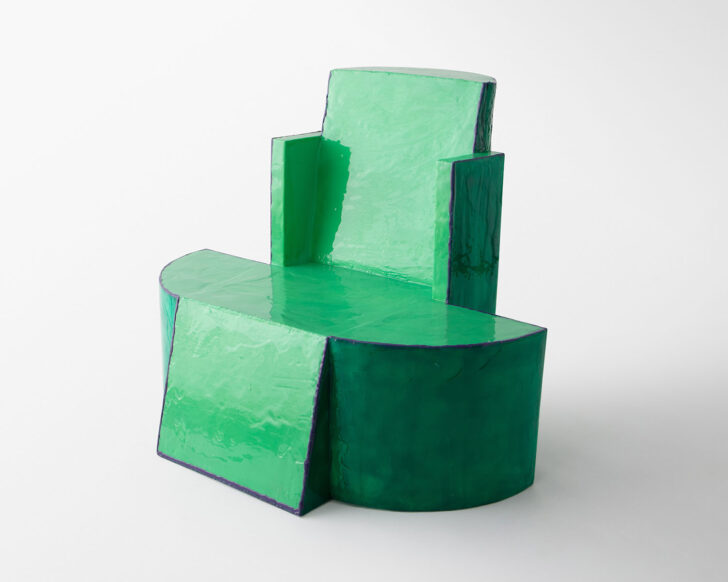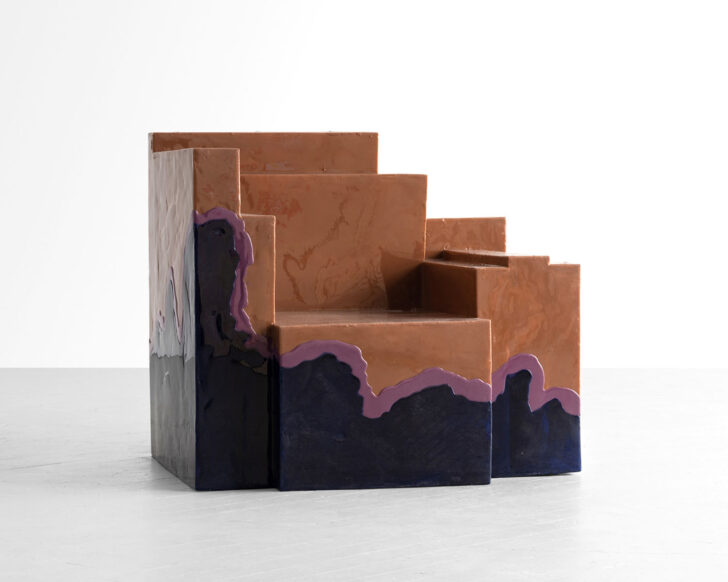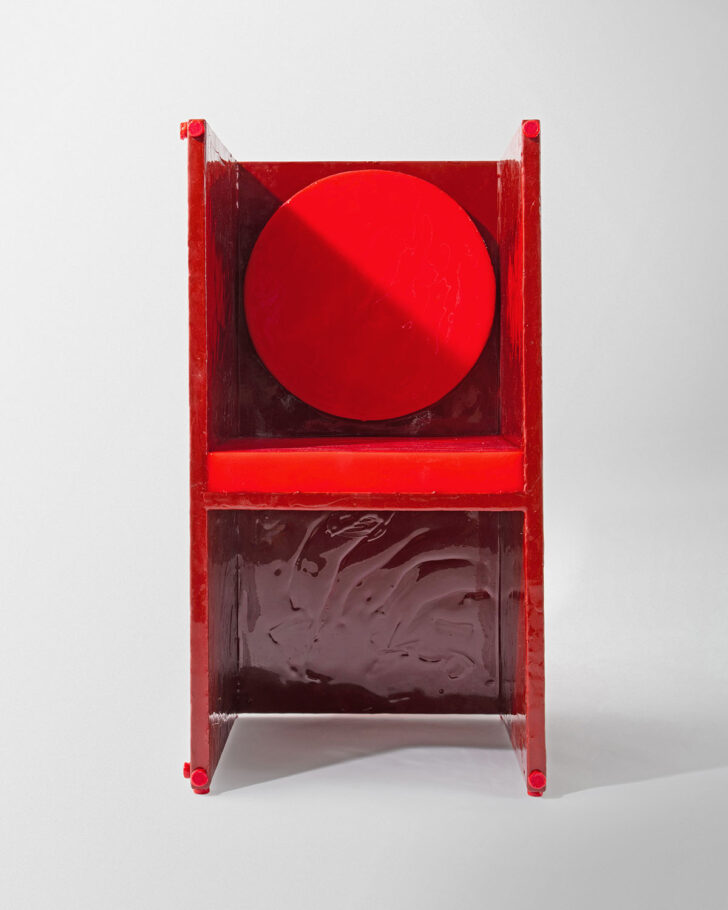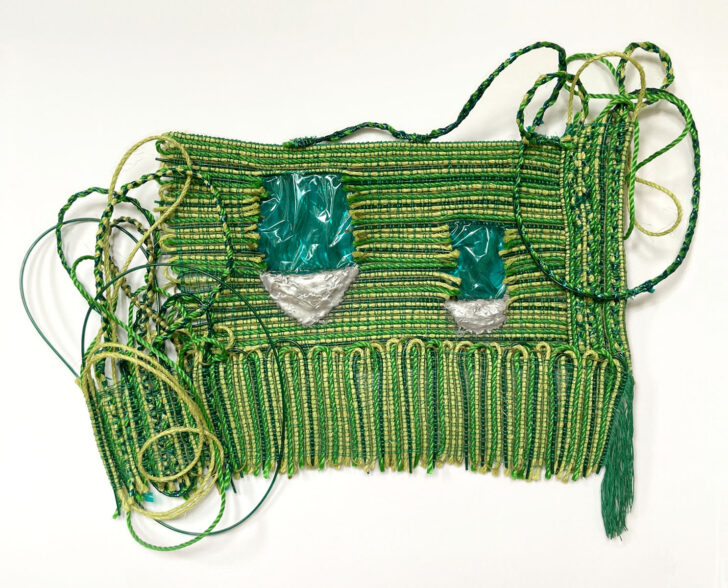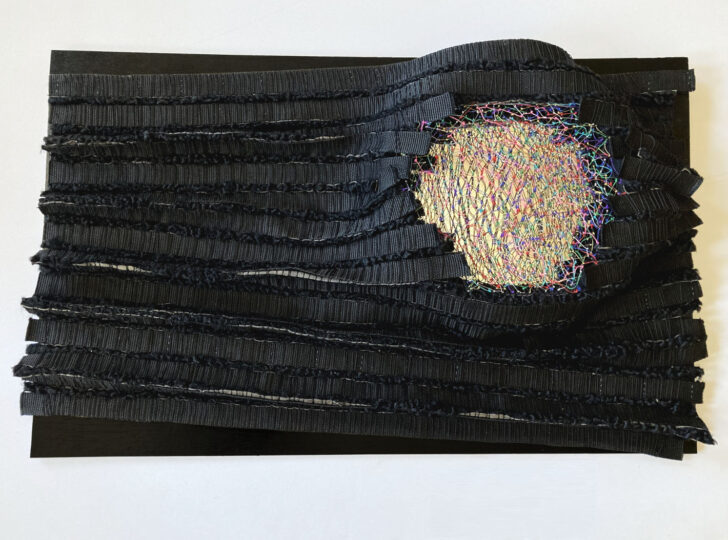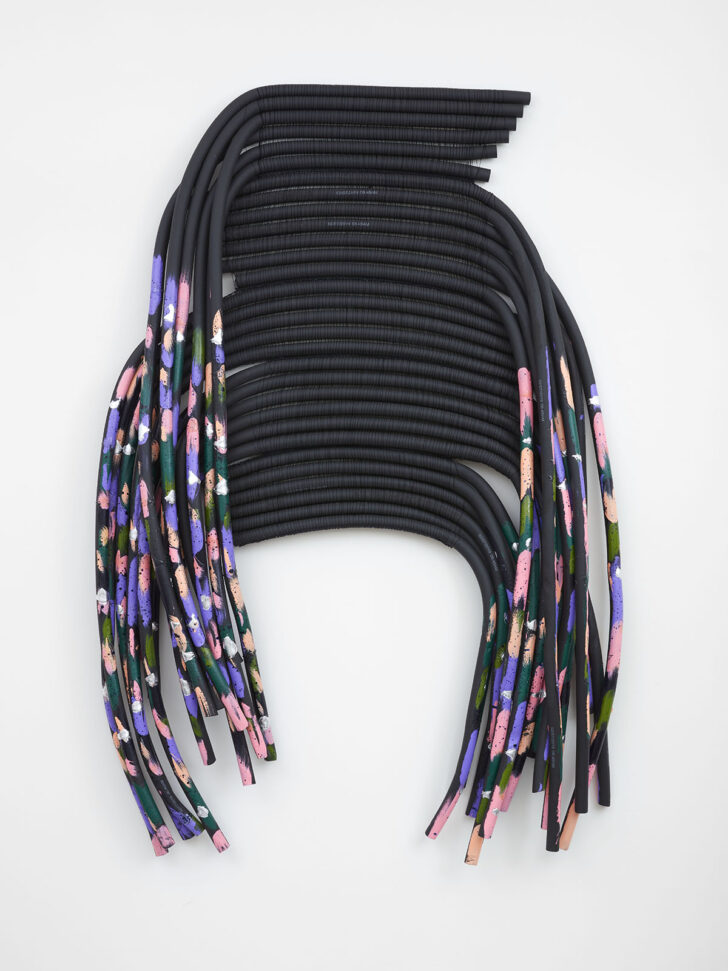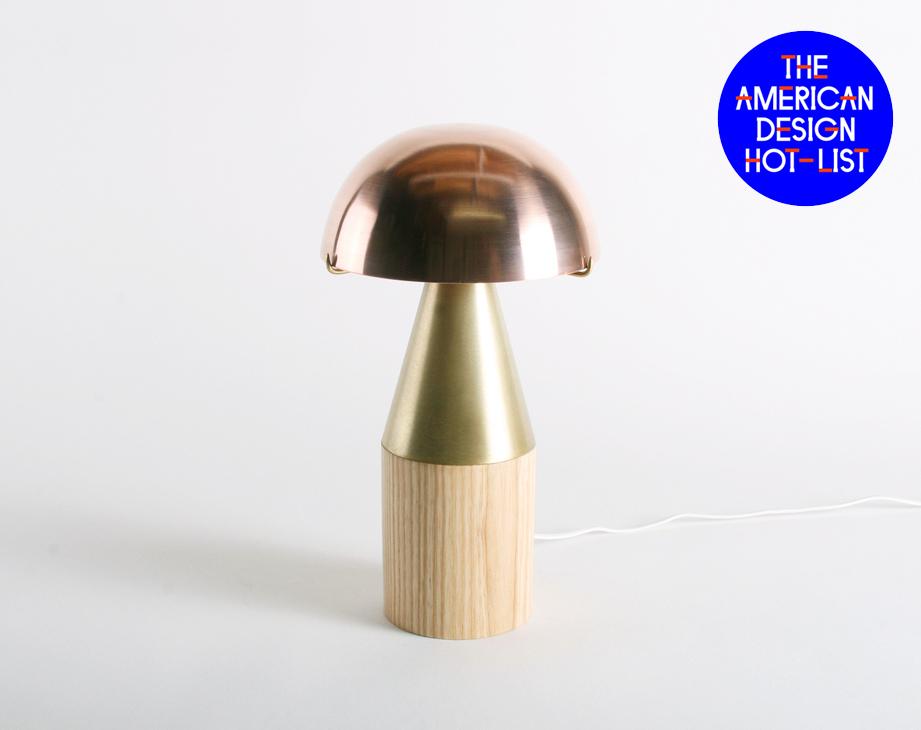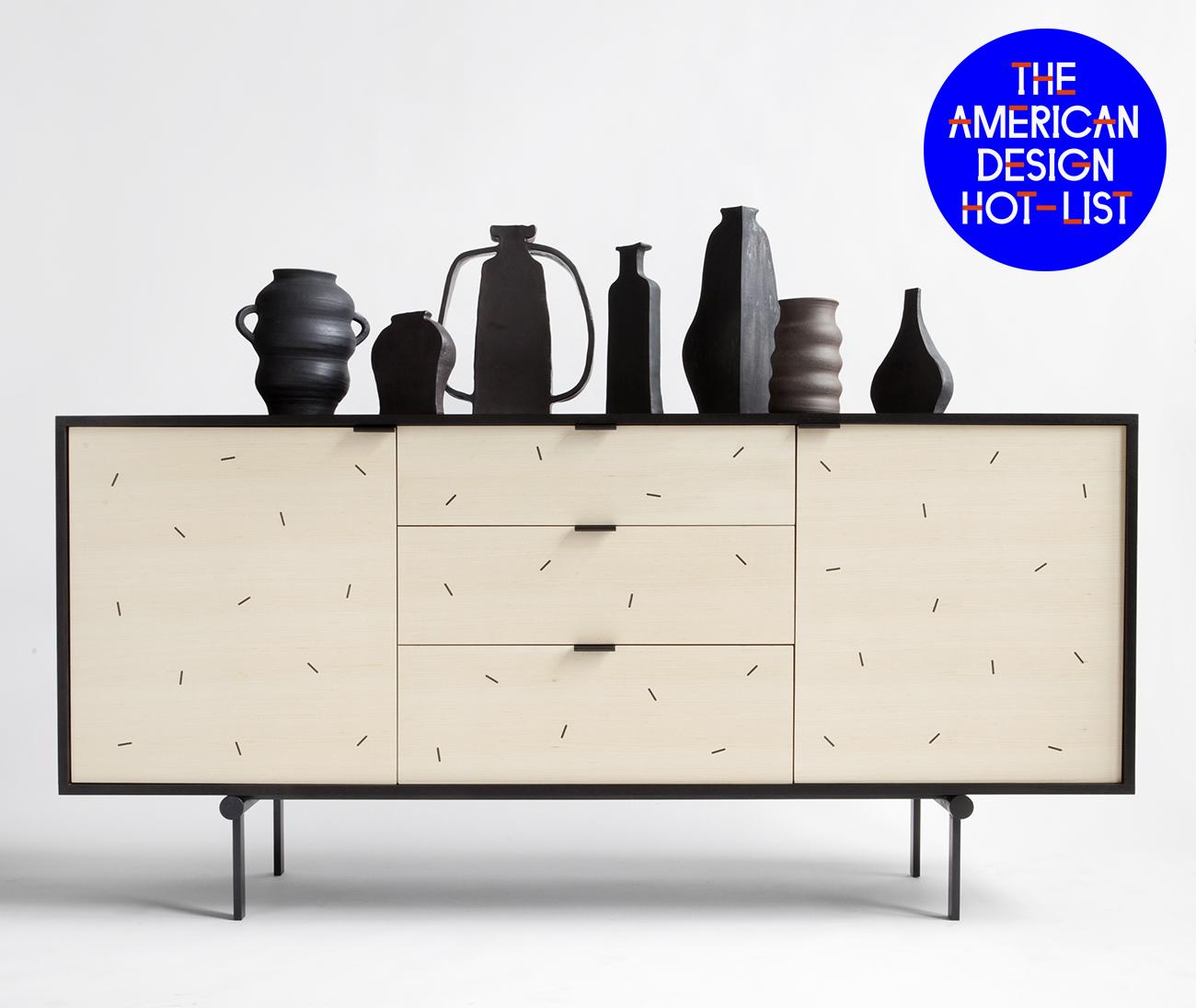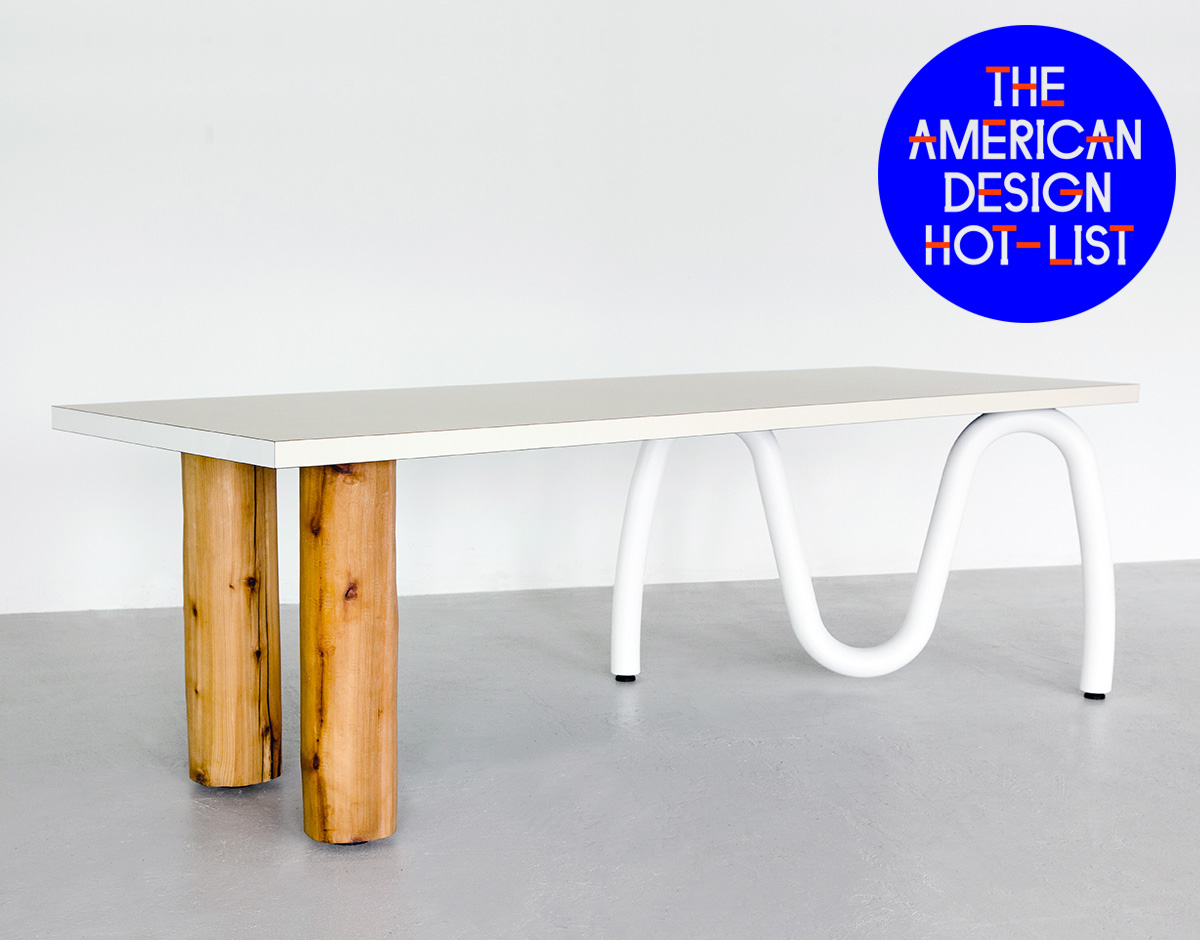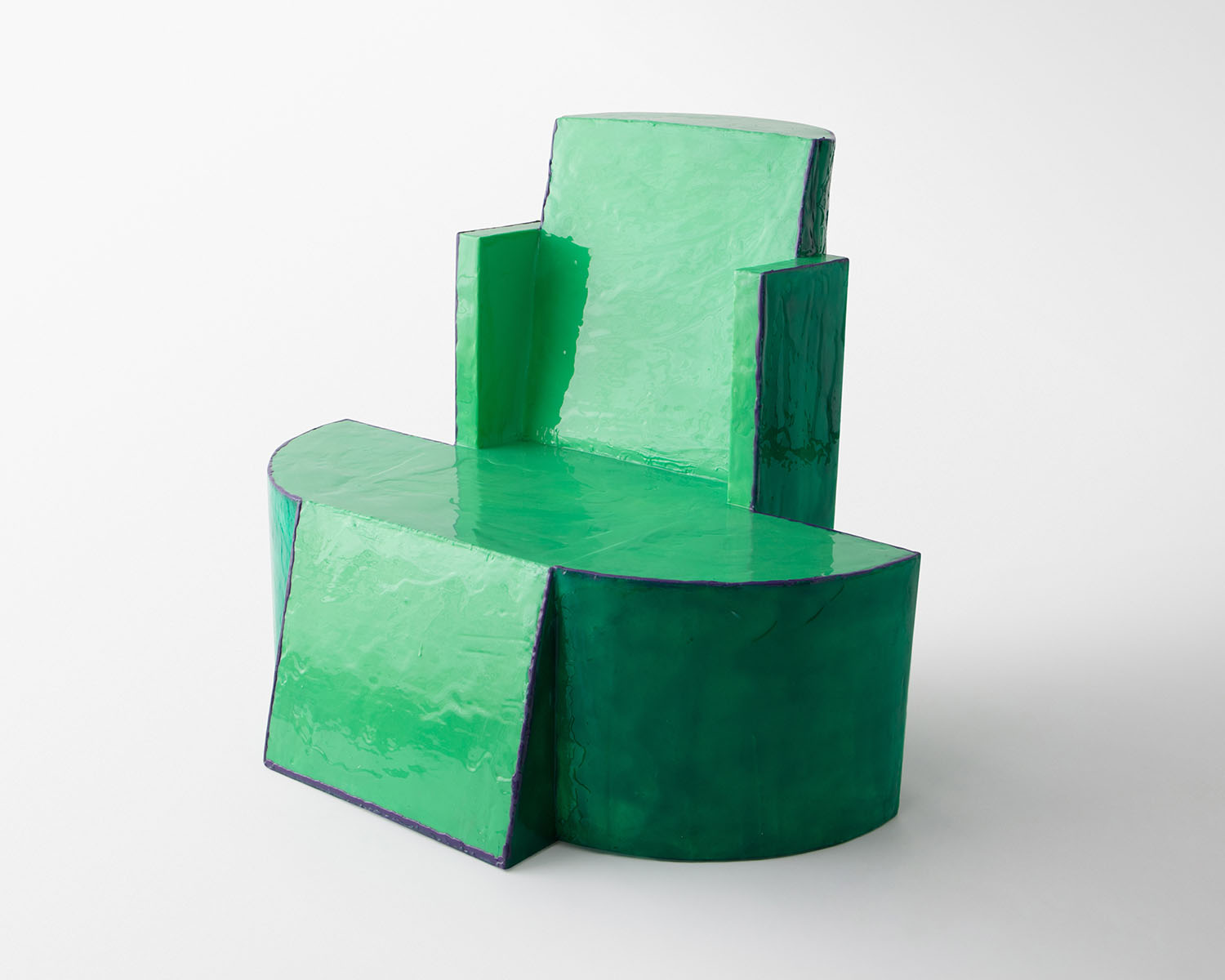
American Design Hot List 2022
Luam Melake
New York, luammelake.com
When we first covered Luam Melake’s wall hangings back in 2021 — which often incorporate unconventional materials such as metal, cement, asphalt, plastics, rubber, and personal mementoes — we had no idea the extent to which we would fall for her burgeoning furniture practice. Zesty Meyers and Evan Snyderman of R & Company were paying better attention than us, it seems, and would soon bring the artist and designer into shows like their Objects USA revival, and, next week, a solo exhibition devoted to Melake’s experimental, brightly colored, humanist chairs. The chairs, for which Melake shapes upholstery foam into geometric shapes and then coats them with layers of pigmented urethane, are psychological in nature. As she says, they “organize bodies in ways that make room for intimacy, eye contact and direct acknowledgment of others — furniture that encourages social and emotional engagement.”
What is American design to you, and what excites you about it?
The American values of individualism, innovation, and freedom of expression feel like the most apparent elements in contemporary American design right now. Innovation is happening at a smaller production scale than ever, which makes becoming a designer a more accessible proposition than ever before. Anyone with a strong point of view who knows how to make things could potentially produce and sell design objects — free of the enormous constraints imposed by large-scale production. This has steered design closer to art since individual expression and technique are so highly valued now. The proliferation of individual craftsmen and artists creating functional objects has made space for such a diversity of perspectives and approaches to making. This is extremely exciting and makes this a fascinating and rich era in American design.
On the other hand, I also find myself nostalgic for post-war American design, when good design was innovative and individualistic while also being affordable, highly functional, and lasting. It would be great to also see mass-produced design in America proliferate using the abundant talent in this country to bring this experimental moment in design to the masses in a sustainable way.
What are your plans and highlights for the upcoming year?
I am super excited about my first solo show with R & Company which is opening on Feb 3rd! The show is titled “Furnishing Feelings” and will feature new, highly functional furniture works that offer the user multiple bodily positions designed to improve social interaction and psychological health. The show is full of ideas for how design can improve lives and will be accompanied by engaging supplementary information. I think it will be very visually stimulating as well since all the pieces are very different from each other and there are a plethora of shapes and colors to look at.
Shortly after the show opens I will be in California installing a large-scale textile installation commissioned for the lobby of a new hotel. It will be my first time working at such a large scale and my first installation work.
What inspires or informs your work in general?
I draw a lot of inspiration from studies in psychology and anthropology. I am primarily interested in exploring the impacts that objects and materials have on human psychology. The central thesis of my weaving work hinges on the notion that the materials that make up our built environment and consumer goods are so essential to our lives that we subconsciously attach metaphorical meanings to those materials. My weaving work exploits the psychological associations embedded in materials to craft narrative or explore emotional themes, by using the materials themselves as metaphorical content.
My recent furniture work draws from research on the relationship between the body, space, and behavior. A furniture designer is uniquely in control of how the bodies of their users are positioned in space. The positioning of the body is an essential element in shaping social interaction and psychological well-being. I refer to anthropological and psychological research to create designs that organize bodies in ways that make room for intimacy, eye contact, stress relief and physical interaction. Multiple options for use allows furniture to adapt to or facilitate social interactions.
America has an alienation problem from which many other societal ills spring. I believe that counteracting the isolation of the digital age and encouraging direct physical social interactions is the way back and forward, to a more positive collective consciousness. This work refers to European design of the 1960s when designers were proposing new ways of living that aligned social concerns with innovation. I am always mining the history of design for inspiration!
